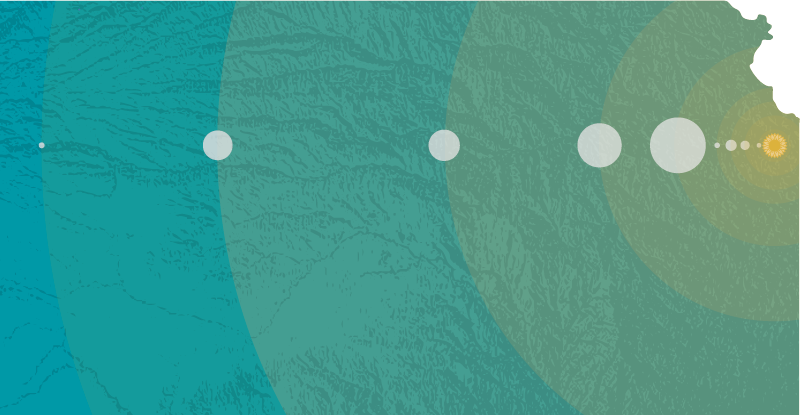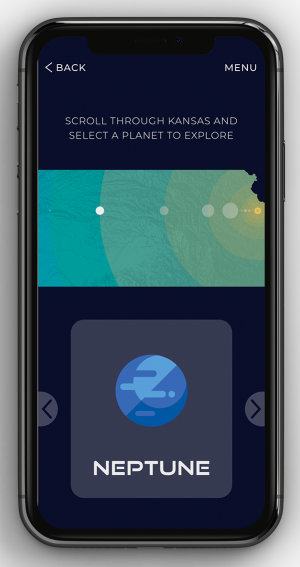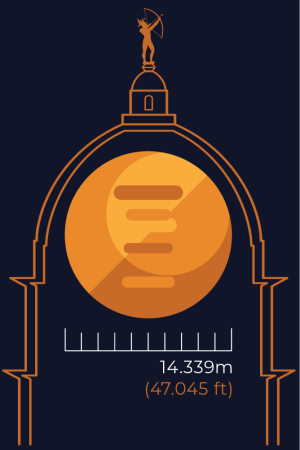
Space touches that spot in the human spirit that yearns for adventure. The empty dark expanse that is full of stars, and worlds around those stars. Kansas Cosmos, https://www.kansascosmos.org/, is a web application exploring this final frontier, while traveling across the plains of Kansas, developed by a multidisciplinary group of students at Johnson County Community College (JCCC). Accurately modeling our Solar System requires something as vast as the state of Kansas so that the sizes of the planets are visible while also maintaining the correct scaled distances between their orbits.

Kansas Cosmos is a project coordinated by the Kansas Studies Institute that brings together students and faculty from the Web Development, Graphic Design, and Astronomy Departments, as well as the Honors Program. This is a multi-semester project-based learning course, where students researched, designed, and developed all aspects of the web application. Over the past three semesters and through the pandemic, fifteen students and five faculty have worked on this stellar project through immense difficulty, living up to our State’s motto of “Ad Astra Per Aspera.”

Have you ever wanted to travel from the scorching surface of the Sun, to the icy wastes of Pluto? With the Kansas Cosmos project, the great distances between the planets of our Solar System are just a drive across Kansas. The planets are scaled so that Pluto, the outermost sentinel of our Solar System, is in Goodland. On the opposite side of the state, JCCC in Overland Park is the location of the Sun. Pluto is roughly the size of a basketball while the Sun is the size of JCCC’s baseball field. The Cosmosphere in Hutchinson coincides with Uranus’ orbit, a diameter approximately similar to a farmer’s windmill. Jupiter fits just inside the Kansas capitol dome at its orbit in Topeka. The size and distance give the full effect for modeling the awesome size of space.

While exploring the celestial highways of our Solar System, users can learn more about some of our human “Kansas Stars” who have advanced space science and exploration, including astronauts, scientists, and engineers. Since Burdett, KS native Clyde Tombaugh’s discovery of Pluto in 1930, many Kansans have proved instrumental in advancing our understanding of space. There is also information about points of interest along each planetary orbit, such as the Cosmosphere in Hutchinson (Uranus) and Prairie Dog State Park (Neptune). Throughout the Spring 2021 semester, we will be testing and updating this app. Check back frequently for updates and improvements.
Ceres’ Golden Plains
Have you walked the cosmic plains of Kansas?
Ceres gold under wine dark sky of spheres,
Burning bright dreams of voyages land us
Out at Hutchinson at the Cosmosphere.
Palm Pluto in Goodland, a basketball
Model across the baseball diamond Sun
A monument to the whole spinning fall.
A bit of fun, in the years of no fun.
Windy Neptune in tornado alley
Meets Saturn’s prairie fire on this voyage.
Solar winds across Sunflower valley
Teach lessons for children laughing joyous.
Come with us across Ceres gold under
Storm cloud Jupiter’s red spotted thunder.




